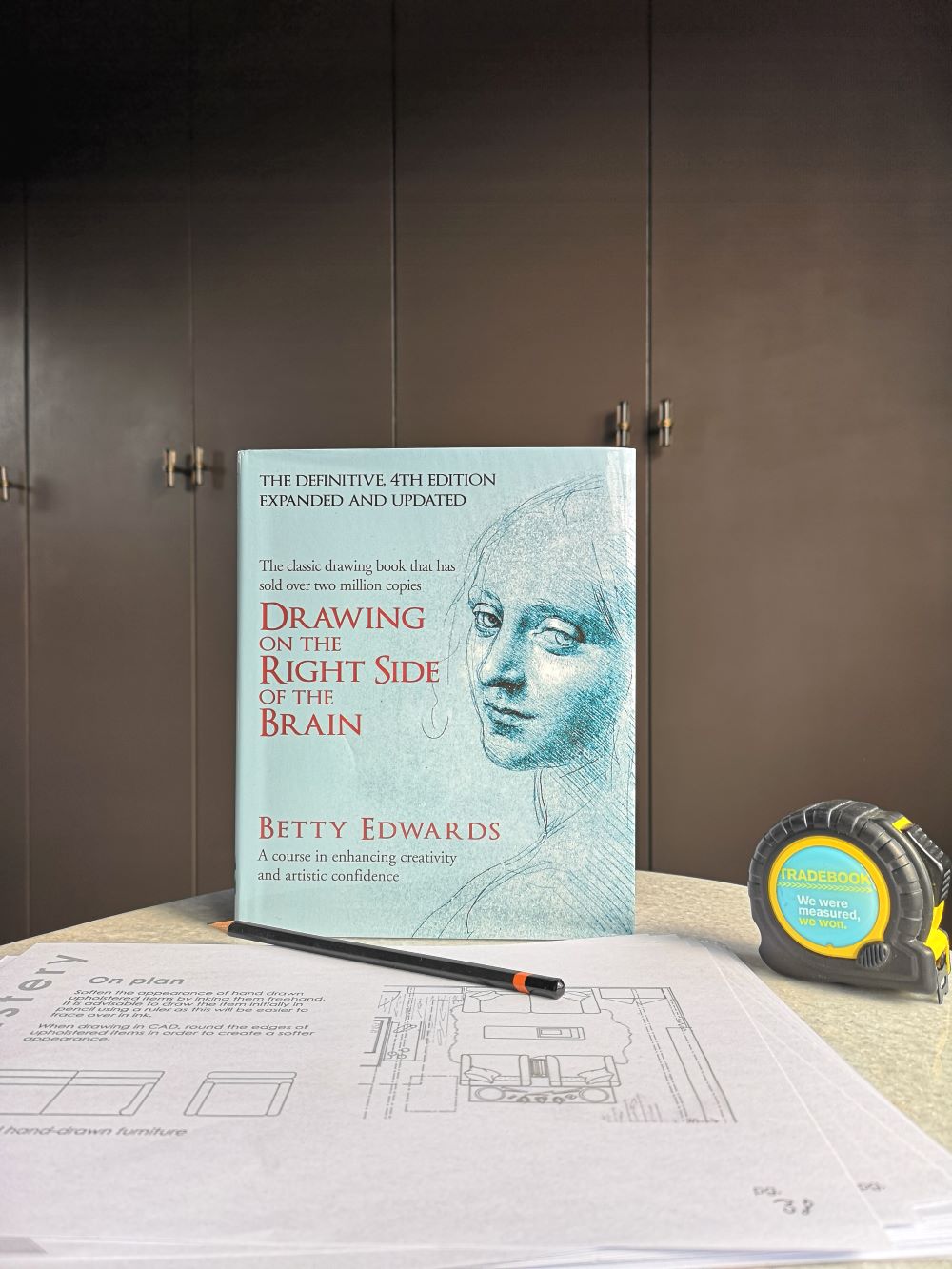WHAT'S IT LIKE TO STUDY INTERIOR DESIGN?
I’ve been a little quiet on the blog these last few weeks and it’s because I have news. I’ve started a course studying interior design….after debating it for almost six years!
The plan/hope/dream is that it will lead to me becoming an interior designer. I’m saying goodbye to nearly two decades of working in corporate PR. There, I’ve said it. It’s official (big gulp!!).
So, I’ve gone back to school. Sort of. It’s the online, distance-learning kind of school.
If you’ve ever thought about studying interior design yourself, you might like to know what it’s actually like. Here’s how I’m finding it so far.
KLC’S ONLINE CERTIFICATE RESIDENTIAL INTERIOR DESIGN
I’ve enrolled on to KLC’s Online Certificate Residential Interior Design and I’ve been getting stuck in for the last two weeks.
Here’s one of my first projects – the concept board
So, why have I picked the online certificate?
Well, in an ideal world, I would love to do the diploma at KLC, but I don’t have £19-£26k going spare to pay the fees. I also have certain realities of being a parent that don’t work (or are difficult/expensive to make work) with the set days/hours in the classroom. And then there’s some quite hefty self-directed study on top.
For me, KLC’s Online Certificate Residential Interior Design is a happy compromise:
It costs around £2k, with various deals and promotions sometimes available. Still a lot of money, but more manageable
You work at your own pace, which means you can fit in your studies around work or family commitments (you have up to three years to complete it)
It’s industry-recognised and teaches the fundamentals that allow you to enter the field.
WHAT’S IT LIKE STARTING A COURSE IN INTERIOR DESIGN?
Well, here are my observations two weeks in, and based upon the first section of the course:
It’s more than picking out scatter cushions!
I knew the course would be more than colours and cushions, but I can see it’s going to be even more stretching and demanding than I imagined.
Even this first section, the part that eases you in, has some scary elements.
First off is learning to draw and sketch to quite a high standard (or so it seems to me). It’s going to take a lot of practice for me to move beyond stick men!
Then, just as you’re getting all arty, there’s a switch to the precision of technical drawing, covering room surveys, plans, elevations and scale.
If, like me, you go down the Computer Aided Drawing (CAD) pathway, there are around 80 videos to watch to learn just the basics of Vectorworks. Just the basics! And then you need to practice.
It’s a big time commitment
It’s fair to say that it’s dawning on me just what a commitment in time this is going to be. As it should be, of course. The certificate wouldn’t be industry-recognised if it were easy.
KLC estimates that you can complete the course in 15 months with 10 hours of study a week. So, I figured that by putting in roughly 20 hours a week I could get through it in seven to eight months. They have a calculator online that tells me the same.
Obviously, that calculator can only ever be a guide, as everyone is different. We each have our own learning pace and abilities to begin with. And I think it’s going to take me longer.
For example, that calculator doesn’t know that my drawing ability is currently limited to stick men, and that the last time I sketched was about 26 years ago in school. So, for that part, and likely others, I need to delve into the additional reading.
The book I’ve opted for, ‘Drawing on the Right Side of the Brain’, is for those who cannot draw. That would be me! It’s based on a course that takes 40 hours to complete in a classroom. I can only imagine it’s going to take me quite a bit longer to learn it from a book.
There are also quizzes and exercises to do to expand your design knowledge. These are optional so I don’t think they’ll be included in that time calculation.
I’ve decided to do them as I’ve always been a bit of a geeky swot. But really, it’s because I want to make the most of the experience and what’s on offer. You might agree that this makes sense, but it all takes time.
You need kit and equipment
I’ve been reminded of my degree and all the stuff you have to buy as a student. To complete projects you need special pencils, paper, ruler, clip board, drawing board, measuring tape/fancy laser distance meter.
There’s more equipment needed as you progress through the sections of the course. It all adds up - both in the time needed to gather it all and also the cost.
If you take the hand drawing pathway for technical drawing there’s quite a bit more to buy. But I’ve also hit a potential problem with the CAD pathway.
It turns out my fairly new and fairly expensive laptop falls short of the graphics requirements to run Vectorworks. I’ve found a fix for the blue flickering screen problem that I was experiencing as a result, but who knows if that will last. I’m seeing my bank account draining (sob!).
You get to indulge your inner interiors geek
I think I’ve sounded quite negative with what I’ve said so far. But it’s just because I want to give an honest and realistic account from my perspective, particularly about the time aspect.
But, I should also be honest and own up to just how excited I’ve been to delve into what the course offers. Such a geek! Those additional quizzes and exercises I mentioned. I am loving those. It’s like a new world is opening up to me.
I’m discovering new interiors crushes – they just happen to be dead! – and my mind is buzzing with how I can bring this new knowledge to my projects.
So, while I’ve had a bit of a reality check with this course, it really is all good. I don’t regret starting it one bit.
If you’re interiors mad and you’re willing to dedicate the time, then based on my experience so far, I’d say go for it.
I’ll keep you updated with how I get on – over the coming weeks and months (hopefully not years!)
Have you ever considered studying interior design?
Victoria x







